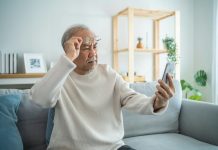
In a new survey, researchers found more than 63 percent of U.S. residents are waiting longer than one to two days to get their coronavirus test results—delays that undermine the contact tracing that could identify individuals who are contagious but show no symptoms.
Overall, the average wait was four days, but in some cases grew to as long as ten days or more for about 10 percent of respondents in a study.
The discovery is important in that health authorities consider rapid turnarounds essential to containing the COVID-19 pandemic, which has so far resulted in the deaths of more than 150,000 in the United States.
Even more worrisome is that wait times do not seem to be diminishing across the country.
The research was conducted by a team from Northeastern, Harvard, Northwestern, and Rutgers universities.
A delay of even a day is critical given that the peak of contagiousness lasts about one week.
In that time, scores more could be infected with SARS-CoV-2, the coronavirus that causes COVID-19, if they come in contact with someone who may seem healthy, making a positive test virtually useless.
The study of 19,058 people across all 50 states and the District of Columbia was conducted between July 10 and July 26, 2020.
It asked residents if they had been tested for COVID-19 and how long they waited to get the results back.
The team found that 37% of those who had been tested by nasal swab received results within two days, with 31% taking more than four days.
For individuals who responded that their last test had been in April, they had waited on average 4.2 days to get results; for those who were tested in July, it was 4.1 days.
Transmission by people who are infected but have no symptoms (either because they will never develop significant symptoms or are presymptomatic) is a key driver behind the spread of COVID-19 because such people are more likely to go about their lives without adopting measures such as quarantining to stem transmission to others.
One solution to the challenge could be at-home tests, which have yet to be approved by the Food and Drug Administration.
They have greater false-negative rates but appear to perform better for individuals who are shedding more virus, says the team
In terms of demographics, the researchers found that Black and Hispanic people are waiting five days for their test results compared to four days for white respondents, a difference that could be explained by resources and local conditions in their communities.
One researcher of the study is David Lazer, a university distinguished professor of political science and computer and information sciences at Northeastern.
Copyright © 2020 Knowridge Science Report. All rights reserved.



